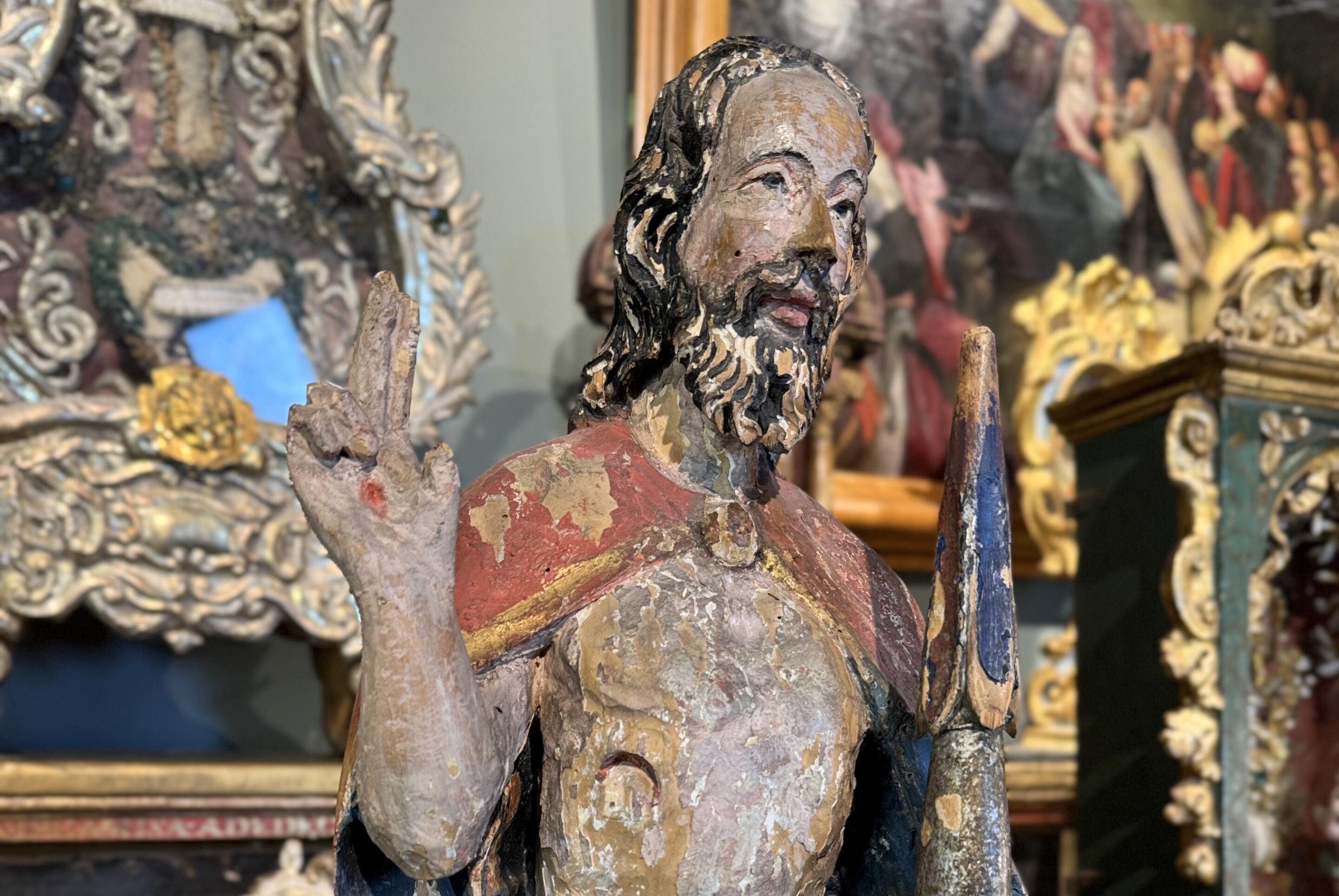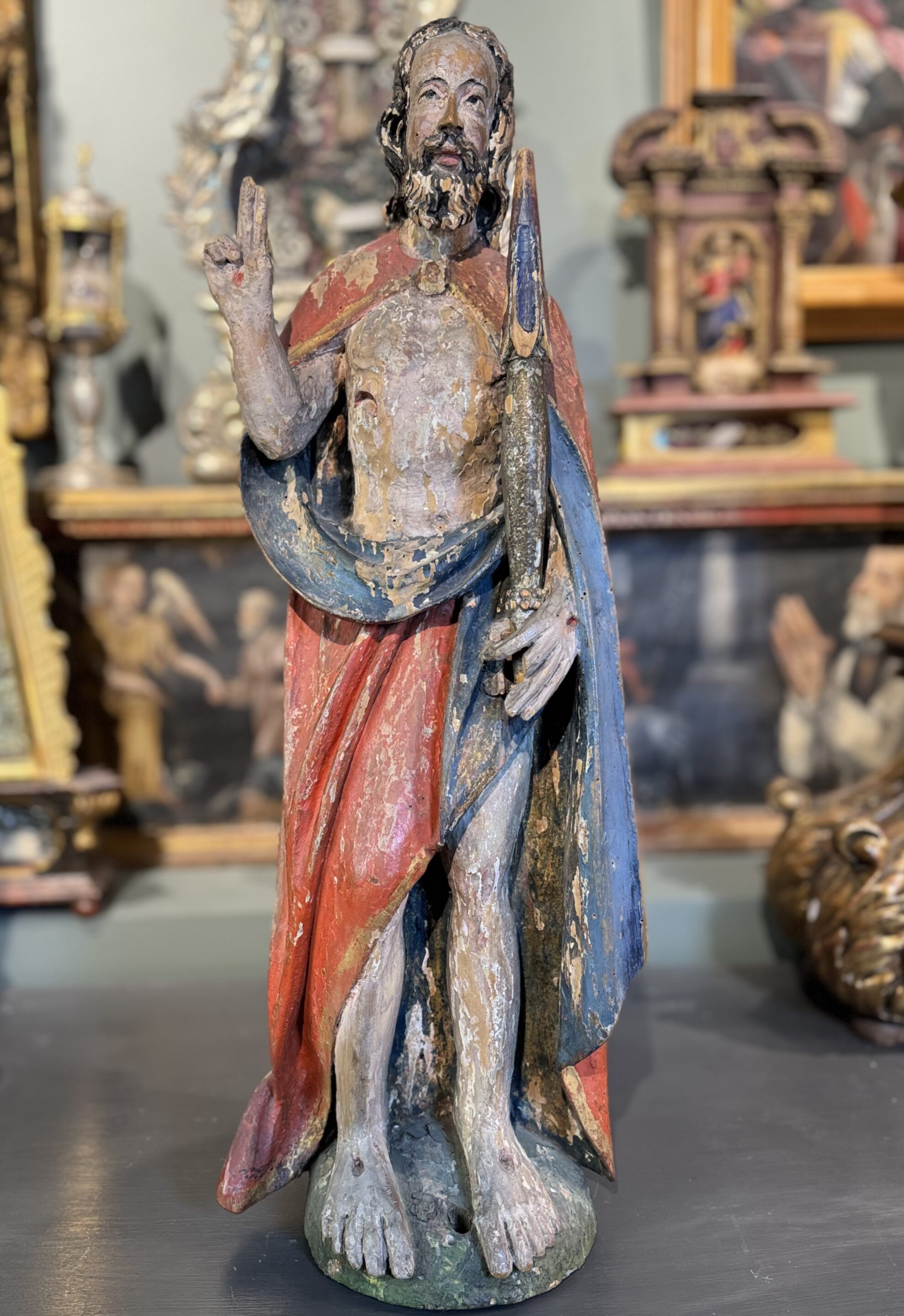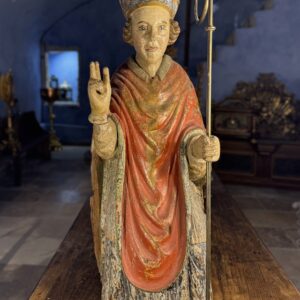Un travail Haute époque de la région du Rhin, sculpté Ronde-bosse en tilleul et polychromé.
Il s'agit d'une ancienne figure de couronnement de retable. Du haut de ses 69 cm (en numérologie, la symbolique du 69 est celle de la stabilité), debout et enveloppé d’un seul manteau rouge, le Christ bénit de sa main droite.
Cette iconographie du Christ triomphant se diffuse largement à partir du XVème siècle. Le modèle créé par l’artiste Alsacien, Martin Schongauer devient une référence pour les cercles artistiques rhénan et germanique.
Ici les trois trous visibles dans la tête étaient destinés à fixer les rayons d’or émanant de la figure divine, à l’instar du Christ de la résurrection représenté sur la gravure de l’artiste conservé au Musée de Condé.
Dimensions de 69 cm
Etat d’usage : Accidents à la main gauche, trous d’envols d’insectes xylophages, accidents à la polychromie, rayons de Gloire et hampe manquant.
Référence 128
A Late Period work from the Rhine region, carved in the round in linden and polychromed. This is an ancient altarpiece crowning figure. From the height of its 69 cm (in numerology, the symbolism of 69 is that of stability), standing and wrapped in a single red cloak, Christ blesses with his right hand.
This iconography of the triumphant Christ became widely disseminated from the 15th century. The model created by the Alsatian artist, Martin Schongauer became a reference for the Rhenish and Germanic artistic circles.
Here the three holes visible in the head were intended to fix the golden rays emanating from the divine figure, like the Christ of the Resurrection represented on the artist's engraving preserved at the Musée de Condé.
Dimensions of 69 cm
Condition of use: Accidents to the left hand, holes from the flight of wood-eating insects, accidents to the polychromy, rays of Glory and missing shaft.
Vous devez être connecté pour publier un avis.






Avis
Il n’y a pas encore d’avis.